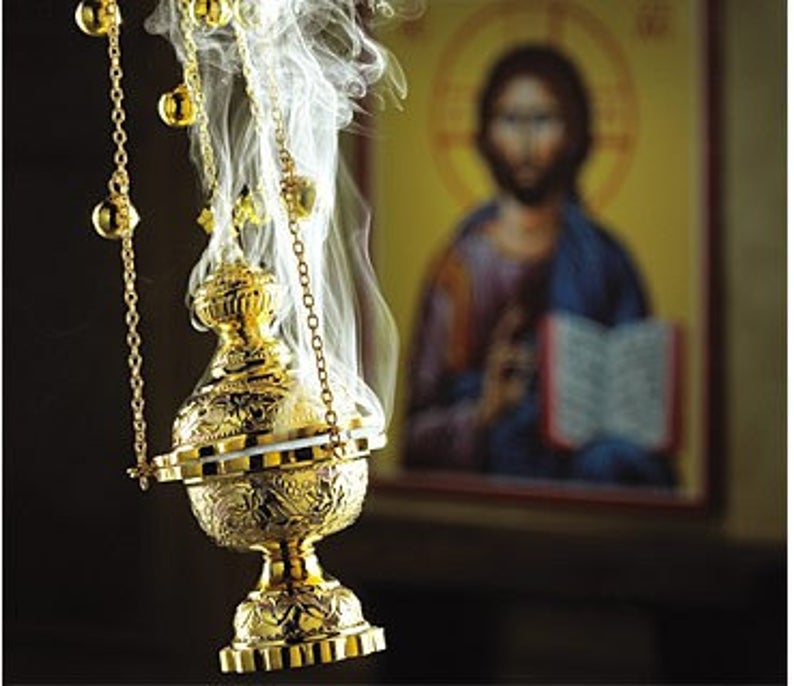The grains of incense are put on burning charcoal in the censer with a prayer, “We offer thee incense, O Christ our God, for an odor of spiritual fragrance. Receive it upon your heavenly altar and send down upon us, in return, the gift of your Holy Spirit.” Incense is a mix of spices and gums that we burn during services to produce fragrant smoke.
The incense burning symbolizes prayer. “Let my prayer come before thee as incense, the lifting up of my hands as an evening sacrifice. . . .“ (Psalm 141: 2 – used during Vespers as the whole church is censed). In Old Testament times, the people would pray before the Holy of Holies while the priest within made the sacrifice. “And the whole multitude of people were praying outside at the hour of incense.” (Luke 1: 10) Symbolically, the incense represents prayer ascending to God.
Below is the video depicting a daily performed ritual of the incense burning by the fathers that reside and serve at the Holy Sepulcher in Jerusalem.
Also, the clergy censes bishops and priests to honor in them Jesus Christ, whom they represent and with whose sacred character they are clothed.

